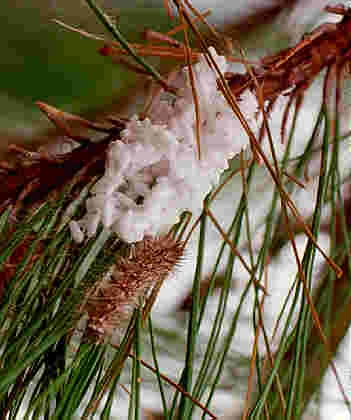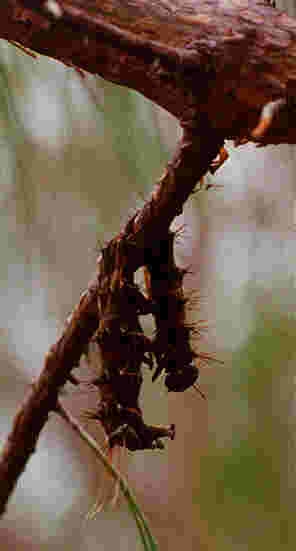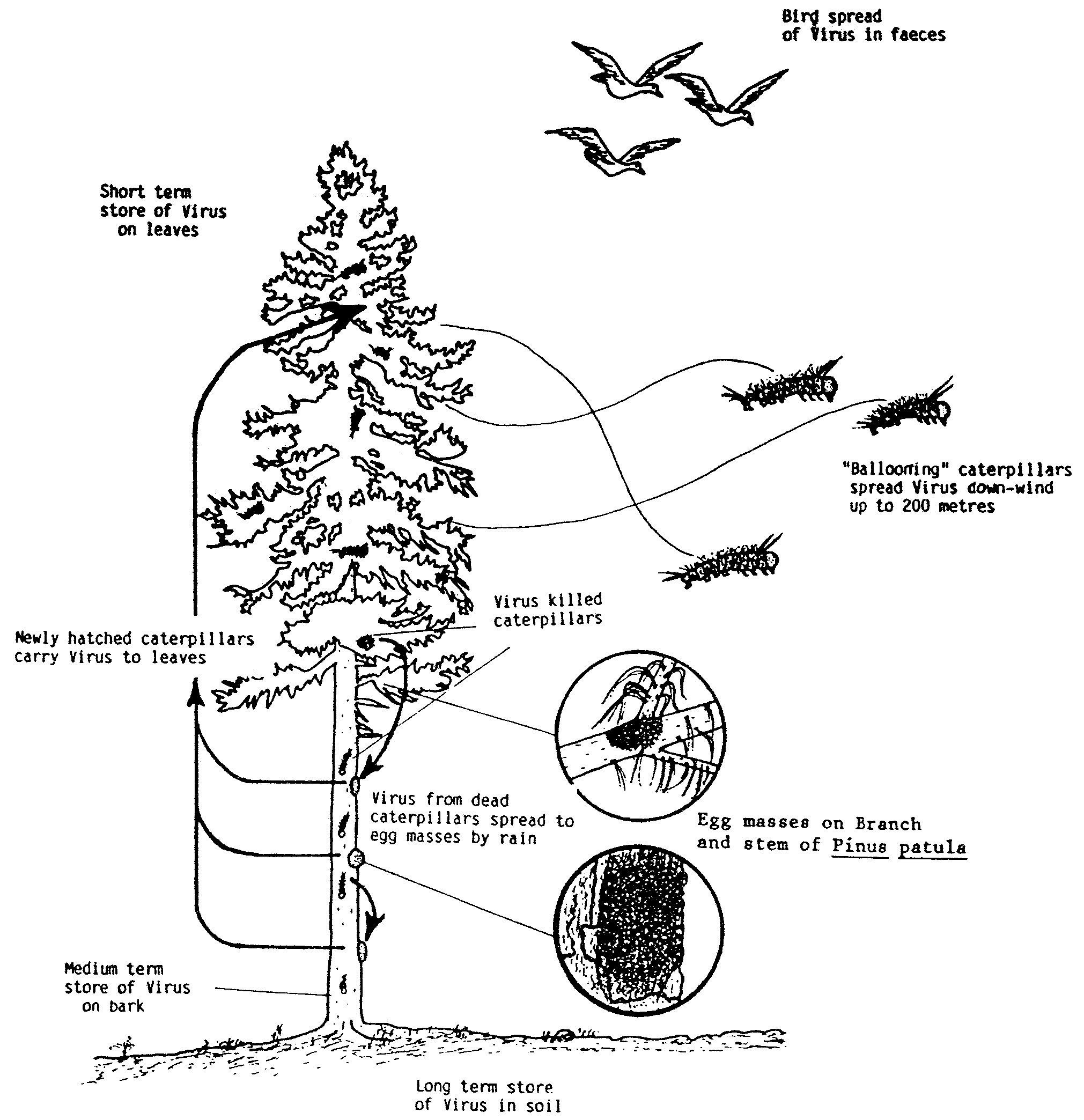There is a variety of natural enemies living on the caterpillars and other stages of the life cycle. Parasitic Apanteles spp. wasps (Braconidae) are known to parasitize the eggs. A study has revealed that birds like rainbow lorikeets are efficient predators that consume considerable numbers of the caterpillars. This seems surprising since the caterpillars are well protected from most predators by their numerous irritating hairs. However, during an outbreak natural enemies have only a little effect on reducing the tremendous number of individuals. More efficient is a disease caused by two specific Baculoviruses that kill large numbers of the caterpillars and thus naturally regulate Lymantria populations. The pathogens are spread naturally by the caterpillars that die and decompose as a result of the virus. The released virus particles are then washed by rain down the bark into the soil, the long-term store of the virus. Virus particles that get stuck to the egg masses are incorporated by the hatched caterpillars, when these eat up the egg shells after emergence. The spread of the virus is therefore favoured by wet climate but also by vectors like birds that eat infected larvae and carry the virus in their faeces to other areas. The virus can remain in the soil for six years without loss of virulence, so that a new outbreak of Lymantria is unlikely within this period of time.


Eggs of the parasitic wasp Apanteles
sp. (vitripennis
- gr.) (Braconidae) deposited next to a Lymantria
ninayi caterpillar (left);
characteristic symptom of Baculo virus infection of a Lymantria
ninayi caterpillar (right)
(photos J.
W. Dobunaba)
The caterpillars that hatch from five egg masses are sufficient to severely defoliate their host. Therefore the regular monitoring of Lymantria populations is the essential part of control programmes. Nuclear polyhedrosis viruses (NPV) are the only promising tool for the control of Lymantria ninayi. The use of the virus as biocontrol agent however, is hampered by the fact that the virus can only be propagated in its living host.
Most moths and butterflies usually disperse by means of flight. However, Lymantriidae show very poor flight performance so that these insects use a different strategy to conquer new territories: the light, newly hatched caterpillars climb up to tree tops and are blown to another suitable host tree on long strands of silk. This type of dispersal is very effective, if the air-borne caterpillars can take advantage of a slope and drift downwards into a valley. It is therefore recommended to plant Pinus patula, the host species of L. ninayi, at the bottom of a valley, where the caterpillars cannot easily disperse. Pinus strobus which is not attacked by Lymantria ,should be planted along the ridges.

Natural
spread of a viral disease of Lymantria
ninayi in the plantation
environment
(reproduced from Roberts, H., 1987)